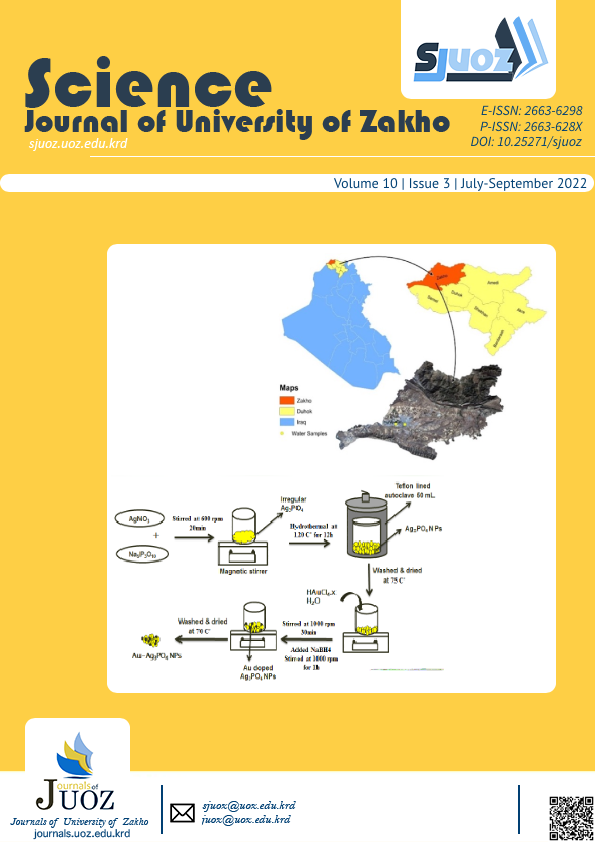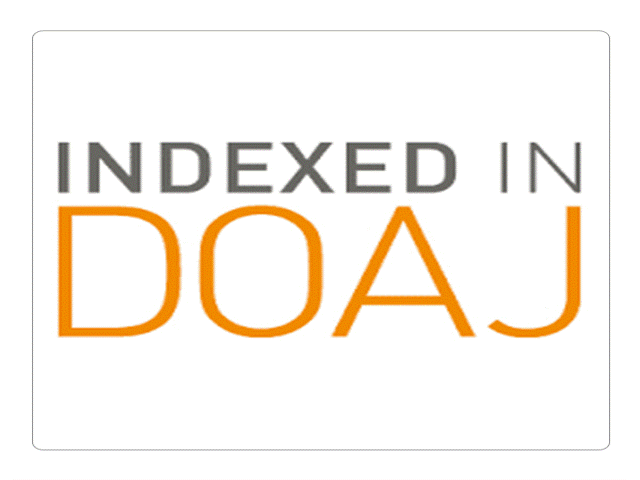Study of Global Solar Radiation in Duhok Province
DOI:
https://doi.org/10.25271/sjuoz.2022.10.3.934Keywords:
Energy Crisis, Climate Change, Global Solar Radiation, Air Pollution, Duhok ProvinceAbstract
This paper studies and analyzes the ground-based global solar radiation (GSR) data available in the Dohuk governorate. The data was collected from the Meteorological Directorate in Duhok for six stations: Kani Masi, Bamarni, Amedi, Mangesh, Akre, and Semel.
The highest monthly average values of GSR in Duhok were in June and July, and the lowest values were in December and January. Among all stations, Amedi has the highest value of the monthly mean of GSR (8.7041 kWh/m2/day) followed by Kani Masi at (8.5265), Mangesh at (8.3249), Bamarni at (8.072), Semel (7.0506) and finally Akre 6.1171(kWh/m2/day), while the lowest values of GSR were in December 2018 mostly, except for Semel was in December 2016.
The annual mean of GSR in (kWh/m2/day) for these stations were 5.0168, 4.8311, 4.817, 4.7546, 4.3155, and 3.6183 for Amedi, Kani Masi, Mangesh, Bamarni, Semel, and Akre respectively.
The monthly mean of the daily clearness index of the study area peaks is in the mid months of the year (May, June, July, August, and September). KT values experienced a dramatic decrease in March in all stations except Mangesh showed a slight increase. Among all the stations, Akre saw the lowest values in KT ranging from 0.32997 to 0.50686 with an annual average of 0.42443.
Downloads
References
Abed Al-Dulaimy, F. M., & Mohammed, G.-Y.-. (2013). A Correlative Measurement of an Hourly Record of Solar Radiation and Climatological Parameters. Tikrit Journal of Engineer Ing Sciences/, 20.
Al Tarabsheh and M. Ababne, A. (2010). Analysis of solar radiation in Jordan. Jordan J Mech Ind Eng, 6(4), 733–737.
Alamdari, P., Nematollahi, O., & Alemrajabi, A. A. (2013). Solar energy potentials in Iran: A review. Renewable and Sustainable Energy Reviews, 21, 778–788.
Al-Salihi, A. M., M. Kadum, M., & Mohammed, A. J. (2010). Estimation of global solar radiation on the horizontal surface using routine meteorological measurements for different cities in Iraq. Asian Journal of Scientific Research, 3(4), 240–248.
Besharat, F., Dehghan, A. A., & Faghih, A. R. (2013). Empirical models for estimating global solar radiation: A review and case study. Renewable and Sustainable Energy Reviews, 21, 798–821.
Duffie, J. A., Beckman, W. A., & Worek, W. M. (1994). Solar Engineering of Thermal Processes, 2nd ed. Journal of Solar Energy Engineering, 116(1), 67–68.
Elistratov, V., & Ramadan, A. (2018). Energy potential assessment of solar and wind resources in Syria. Istrazivanja i Projektovanja Za Privredu, 16(2), 208–216.
Hassan, R. A. (2012). Evaluation of the Effect of Vehicle Exhaust Emission on the Ambient Air Quality in Duhok City [Ph.D.]. Duhok.
Katiyar, A. K., & Pandey, C. K. (2010). Simple correlation for estimating the global solar radiation on horizontal surfaces in India. Energy (Oxford, England), 35(12), 5043–5048.
Mahmood, F. H., & Al-Hassany, G. S. (2014). Study Global Solar Radiation Based on Sunshine Hours in Iraq. Iraqi Journal of Science, 55(44), 1663–1674.
Meena, B., & Omar, K. (2015). Chemical analysis of rainwater and study effect of vehicle emissions on human health in Kurdistan region. Oriental Journal of Chemistry, 31(2), 689–695.
Mousazadeh, H., Keyhani, A., Javadi, A., Mobli, H., Abrinia, K., & Sharifi, A. (2009). A review of principle and sun-tracking methods for maximizing solar systems output. Renewable and Sustainable Energy Reviews, 13(8), 1800–1818.
Omar, O. S. (2010). Estimation Of Global Solar Radiation In Duhok City And Characterization Of Two Types Of Silicon Solar Cells [MSc]. Dohok.
Sen, Z. (2009). Solar energy fundamentals and modeling techniques: atmosphere, environment, climate change and renewable energy (Vol. 46, pp. 46-2687-46–2687). Springer Science & Business Media.
Uçkan, İ. (2018). Analysis of solar radiation data in van, turkey. Celal Bayar Üniversitesi Fen Bilimleri Dergisi, 421–427.
Vojáčková-Sollorano, I. (2022). As Iraq joins Paris Agreement, the UN calls for further support to help the country adapt. Https://Iraq.Un.Org/.
Yousif, K. M. (2016). Preliminary assessment of heavy metal in selected sites within Duhok city, Iraq. Am. Acad. Sci. Res. J. Eng. Technol. Sci., 26(2), 316–325.
Zell, E., Gasim, S., Wilcox, S., Katamoura, S., Stoffel, T., Shibli, H., Engel-Cox, J., & Subie, M. A. (2015). Assessment of solar radiation resources in Saudi Arabia. Solar Energy (Phoenix, Ariz.), 119, 422–438.
Downloads
Published
How to Cite
Issue
Section
License
Copyright (c) 2022 Farhan Keti Kabao, Omar Salih Omar

This work is licensed under a Creative Commons Attribution 4.0 International License.
Authors who publish with this journal agree to the following terms:
- Authors retain copyright and grant the journal right of first publication with the work simultaneously licensed under a Creative Commons Attribution License [CC BY-NC-SA 4.0] that allows others to share the work with an acknowledgment of the work's authorship and initial publication in this journal.
- Authors are able to enter into separate, additional contractual arrangements for the non-exclusive distribution of the journal's published version of the work, with an acknowledgment of its initial publication in this journal.
- Authors are permitted and encouraged to post their work online.








